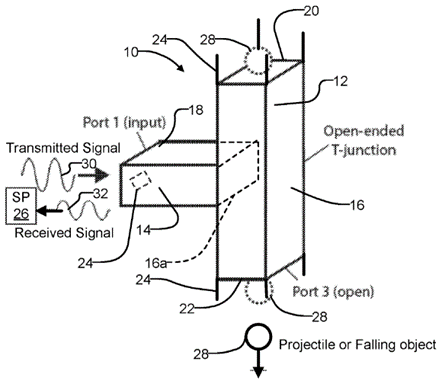As additive manufacturing techniques become more and more sophisticated, in-situ diagnostics are becoming increasingly important to ensure optimal print performance. Conventional methods uses high-speed cameras that acquire video during the entire printing, which result in huge video files that need to be processed. Using a radio frequency (RF) device may significantly reduce in-situ diagnostic data and enable real-time processing.
LLNL’s novel approach is to use waveguide-based devices and microwave energy to perform characterization of the projectile or droplet. Various embodiments of droplet devices can determine the size, motion (position, velocity, and acceleration), rate, and material elements of a moving element. This invention uses a tubular housing having a first end (input port) and a second end (output port). As a source of RF energy projects into the input port, a signal processing system detects the characteristics of a reflected RF signal. LLNL researchers developed this technology for additive manufacturing, but it also has broad utility for the monitoring of projectiles in defense, agriculture, food, chemical, and manufacturing industries.
- Does not require huge amounts of video data
- Able to determine in-site characteristics of droplets while in motion without advance knowledge of the droplet dimensions.
- Not limited to non-metal projectiles or particles
- Droplet or inkjet-based additive manufacturing diagnostics
- Projectile diagnostics for defense applications
- Grain or seed characterization for agricultural applications
Current stage of technology development: TRL 3
LLNL has filed for patent protection on this invention.
U.S. Patent Application No. 2021/0116473 System and Method Using In-Situ Electromagnetic Diagnostic for Real-Time Projectile Characterization, published 04/22/22


